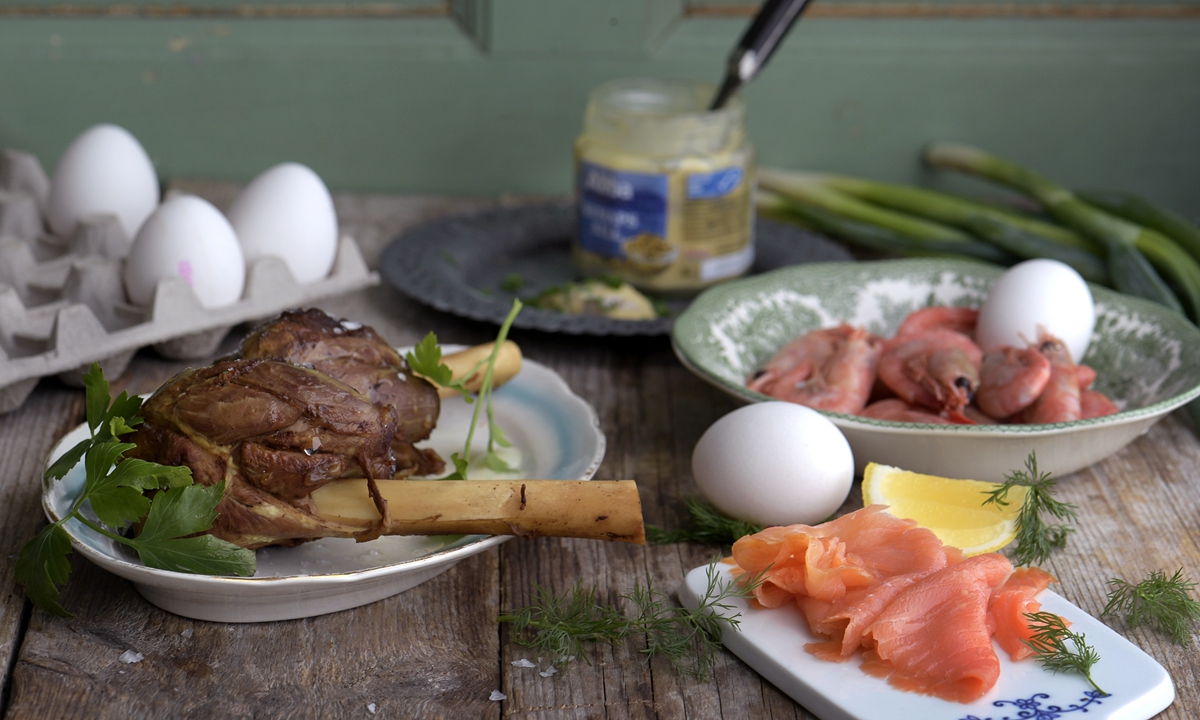Swedish fish dish so pungent it should be opened outdoors or underwater
Source: AFP Published: 2020/9/10 17:53:40

Swedish Easter food: a leg of lamb, smoked salmon, eggs, shrimp and herring Photo: AFP
As chef Malin Soderstrom opened the can, the trapped air escaped with a hiss and filled the balcony of her waterside restaurant with the pungent odor of Sweden's infamous delicacy, surstromming.
Likened to the smell of rotten eggs, surstromming - fermented herring - has gained a following online where daring gastronomes film themselves trying the seafood, which should be opened outdoors because of the stench, and preferably underwater in a bucket.
From her seaside restaurant based in a former herring processing factory in the small fishing village of Skarsa more than 200 kilometers north of Stockholm, Soderstrom tries to defend the delicacy's reputation.
"The sourness with the saltiness together with the bread, potato and butter and onion, it's just fantastic," the 51-year-old said outside the restaurant, dressed in her black chef's uniform.
Soderstrom's grandparents lived in one of the village's squat fishermen's houses near the water and she ate surstromming, directly translated "sour herring," from childhood.
Herring caught in the Baltic are salted after being caught and left to ferment for months i n barrels before they are canned.
Surstromming hails from northern Sweden, where it is most commonly eaten, but tins of the seafood are available from most large supermarkets across Sweden.
In recent years a museum has been dedicated to the divisive dish, and some restaurants dedicate a whole day to eating it to avoid offending other customers' noses.
But with customers down due to COVID-19, Soderstrom and her sister Anna called off their own surstromming day this year.
Instead they organized a small demonstration of how the dish should be enjoyed, inviting a handful of friends and colleagues to sample the culinary delight.
Opening the cans away from their tables, Soderstrom served it to the visitors on Swedish flat bread along with chopped red onions, boiled potatoes, dill, tomatoes, chives, sour cream and hard cheese.
Taking a break from the kitchen, 25-year-old chef Joseph Netzler tried the fish for the first time, sniffing it cautiously before tasting it with hard bread, dill and potatoes.
"It smelt a lot better than I thought it would, and the taste was good. It was kind of strong, kind of umami," he said, sitting on the restaurant's balcony overlooking the village's small harbor.
"I think I've had my fill for a while," he said, but added he might try it again in "one or two years."
Soderstrom was bemused by YouTube videos of non-Swedes opening cans of surstromming and trying to eat it whole with no accompaniments, often struggling to stomach the smell.
"Of course they think it's disgusting," Soderstrom said with a smile. "I would think that as well if I had it the same way."
"The whole meal is really important. Who you're eating with, where you're eating and how you're eating it. I want to keep that alive," she said.
Posted in: FOOD,CULTURE & LEISURE